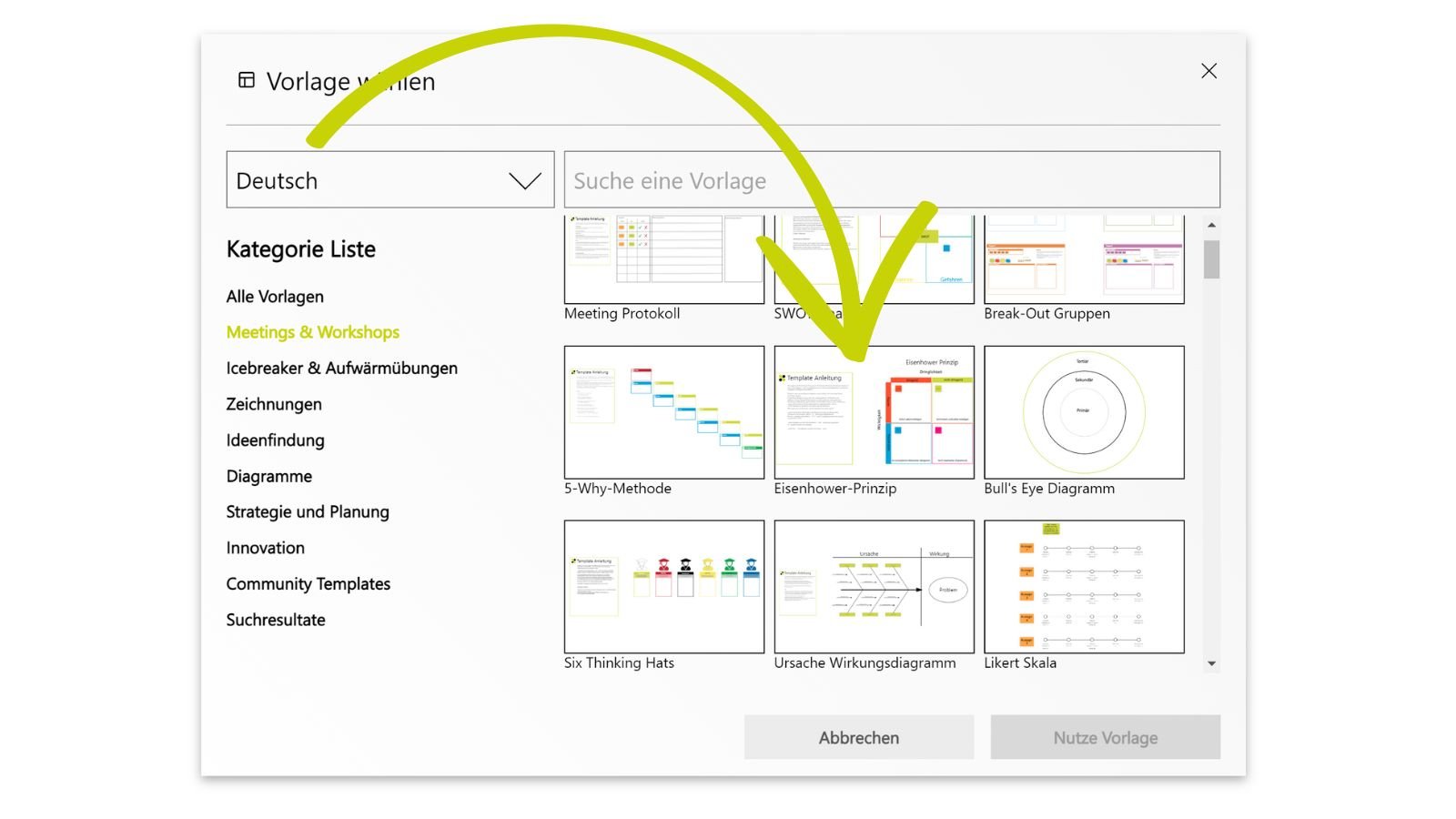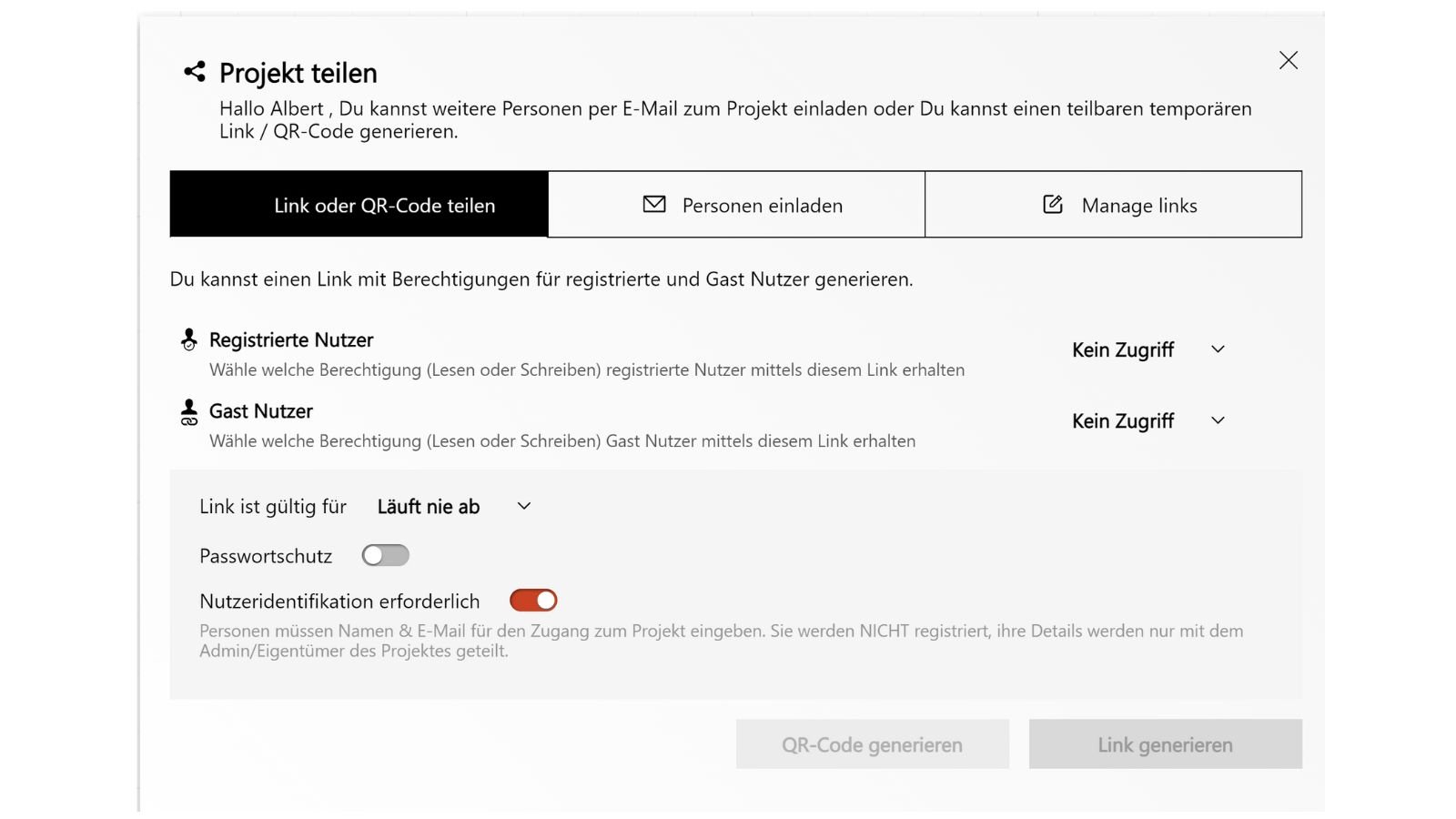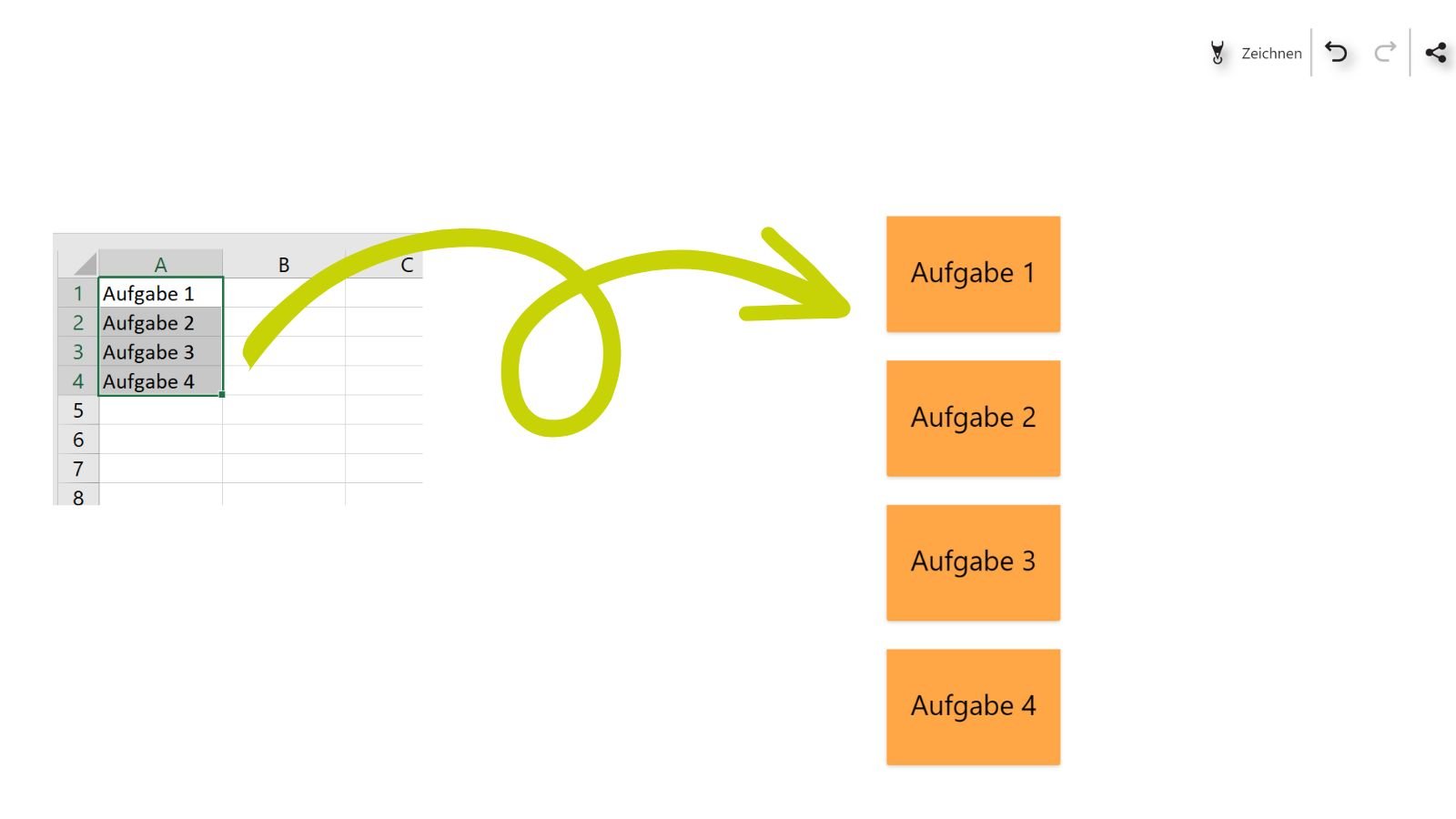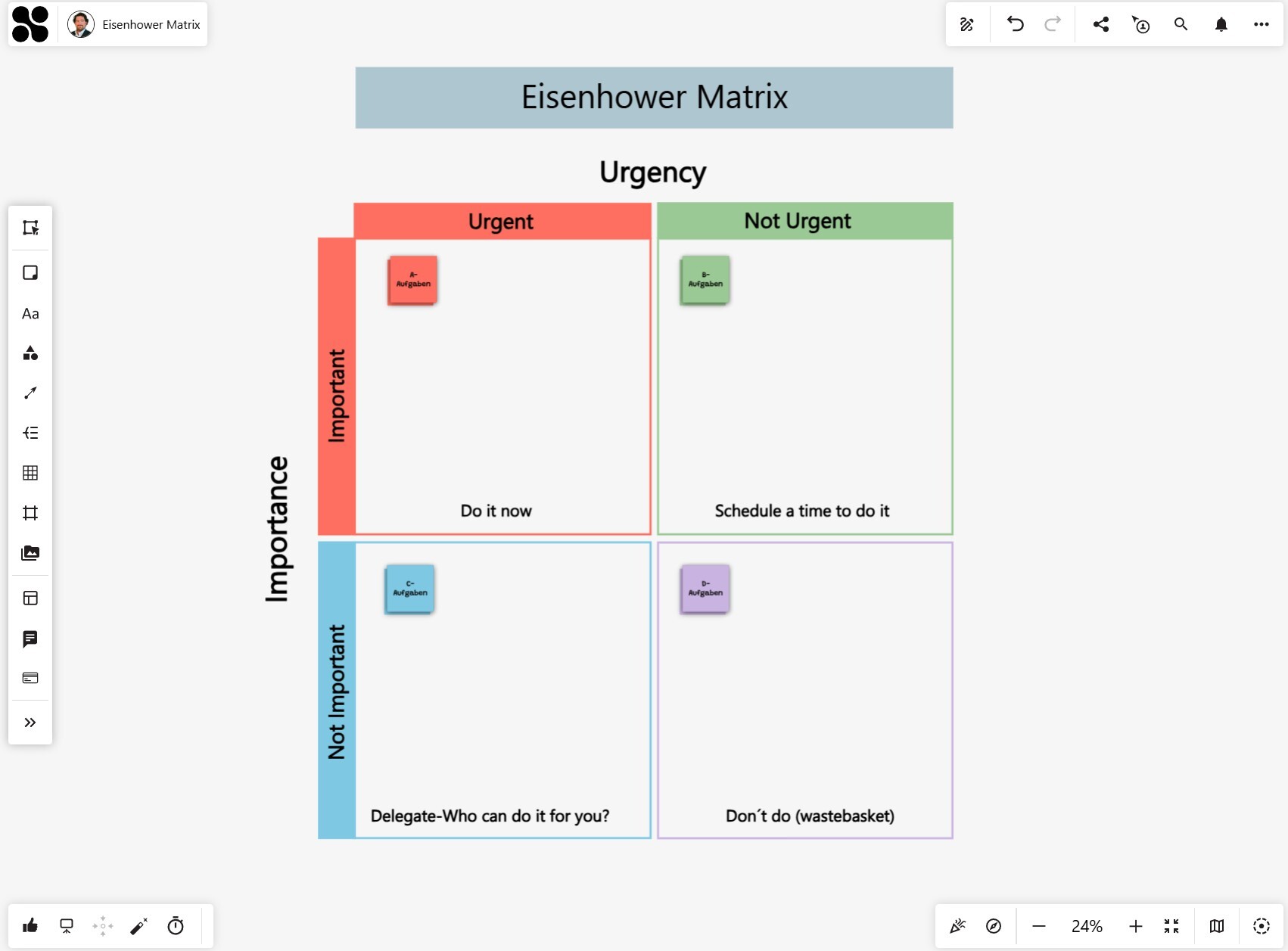Eisenhower Matrix Definition
The Eisenhower Matrix is a time management tool based on the prioritization of tasks. It was developed by US President Dwight D. Eisenhower and is also known as the Eisenhower principle or 4-quadrant principle. The matrix divides tasks into four quadrants based on their urgency and importance. The four quadrants are:
- A-Tasks: complete immediately: Tasks that need to be completed immediately and have a high impact on achieving goals.
- B-tasks - important, not urgent: plan: tasks that are important but do not require immediate attention. These should be prioritized and scheduled for a later time.
- C-tasks - not important, urgent: delegate: Tasks that seem urgent but have little to no impact on achieving goals. These should be delegated or outsourced if possible.
- D tasks - not important, not urgent: eliminate tasks that are neither urgent nor important. These should be avoided or eliminated to save time and energy for more important tasks.
By prioritizing your tasks in the Eisenhower matrix, you can ensure that you focus on the most important and promising tasks, increasing the effectiveness of your activities.

Objective Eisenhower Matrix
The aim of the Eisenhower Matrix is to get an overview of upcoming tasks and to prioritize them. This ensures that you focus on the tasks that offer you the greatest added value in the current situation. If you work according to the Eisenhower principle, this has the following positive effects:
- Increase productivity: by focusing on the most important and impactful tasks, you can increase productivity and get more done
- Focus on the important tasks: The Eisenhower matrix helps to identify the really important tasks and focus on completing them.
- Reducing stress: Important but non-urgent tasks are not tackled. Stress is reduced by being able to concentrate on certain tasks and not taking care of all tasks at the same time.
- Time is used effectively: By focusing on the important and urgent tasks, time is not wasted on unimportant tasks
- Improved decision-making: The Eisenhower Matrix can help make better decisions by providing a clear prioritization of tasks and a clear overview of which tasks are most important.
Advantages and disadvantages of the Eisenhower Matrix
Advantages of the Eisenhower Matrix:
Working according to the Eisenhower principle offers numerous advantages that can be realized quickly. The advantages of the Eisenhower Matrix are
- The graphical representation creates an overview and order
- The number of tasks you have to deal with is reduced by completely sorting out tasks.
- The method is simple and quick. Thanks to its simplicity, the method is quickly understood and can be used directly in a meeting or workshop without preparation.
- Tasks are clearly prioritized by organizing them according to a goal-oriented system.
- The Eisenhower matrix helps with the planning of tasks and effective time management by prioritizing the most important tasks and delegating or eliminating less important tasks.
Disadvantages of the Eisenhower Matrix:
- Lack of flexibility: the Eisenhower matrix can sometimes be too rigid and not adapt to unforeseen events that suddenly require higher priority.
- Difficulties in prioritization: It can be difficult to correctly assess the priority of tasks, especially when several tasks appear important or urgent at the same time.
- No room for creativity and innovation: The Eisenhower Matrix focuses on task completion and prioritization but does not provide support for creative thinking or innovation.
- The danger of procrastination: The Eisenhower matrix can lead to less important tasks being constantly postponed, as they are classified as not urgent or unimportant, even though they ultimately need to be completed.
How do I apply the Eisenhower Matrix successfully?
In order for you to successfully apply the Eisenhower Matrix, clear and careful planning, as well as continuous monitoring and adjustment, is required. Here are some best practices for applying the Eisenhower Matrix:
- Create a list of all tasks: To do this, collect all the tasks that need to be completed and write them on a list or on post-its.
- Categorize the tasks according to their importance and urgency by placing them in the Eisenhower matrix.
- Prioritize the tasks within each quadrant by sorting them according to their relevance to goal achievement and their impact on productivity.
- Plan the implementation of the tasks: Start with the most important and urgent tasks first and delegate less important tasks. Non-urgent and non-important tasks can also be put to the back or removed completely, as it may not make sense to work on them at all.
- Regularly review the tasks in the Eisenhower Matrix and their implementation. Remove the completed tasks from the matrix and check whether the categorization according to importance and urgency still corresponds to the current situation. Reprioritize tasks and shift them between the quadrants if necessary.
Eisenhower Matrix: Templates and examples
There are numerous templates for the Eisenhower Matrix that you can use to get started without having to create the priority matrix yourself. Below we have put together a few examples of how you can use the Eisenhower Matrix.
Examples of the use of the Eisenhower matrix in public administration:
Examples of the use of the Eisenhower matrix in the business area:
Create Eisenhower Matrix with Collaboard
With the online whiteboard Collaboard, you can quickly and easily create an Eisenhower Matrix for yourself or your team. Various templates are available in Collaboard, which you can use to quickly prioritize your tasks.
Here we explain step by step how to create an Eisenhower matrix with the Collaboard app:
Add the Eisenhower template to the whiteboard
In Collaboard, you will find various templates for task prioritization. In the template category "Meetings & Workshops" you will find the Eisenhower Matrix template.

Invite people to your whiteboard
You can create the Eisenhower Matrix on your own, but often several opinions are needed to categorize and prioritize tasks. You can invite your team members to Collaboard as guests or registered users.

Import or create the list of tasks
In Collaboard, the individual tasks are best written on cards. You can simply import tasks from a table into Collaboard via copy & paste. Cards are created automatically. Alternatively, you can write the tasks directly on cards in Collaboard.

Sort the cards into the 4 quadrants
Now move the cards into the 4 quadrants and arrange them according to importance and urgency. Adjust the color of a card when you have inserted it into the quadrant so that all tasks in a quadrant have the same color.

Conclusion: The Eisenhower Matrix as the key to successful time management
The Eisenhower Matrix is a method with which you can quickly prioritize tasks. It gives you a quick overview of all your tasks and classifies them into four categories: important and urgent, important but not urgent, not important but urgent, and not important and not urgent.
This type of prioritization allows you to focus on the essential tasks and use your time and energy as effectively as possible. Unimportant tasks are delegated or eliminated. The Eisenhower principle, therefore, helps you to manage your time successfully.
To work collaboratively and visually in a team, it is worth using an app that supports you in creating and applying the Eisenhower Matrix.
Eisenhower Matrix - Frequently asked questions & answers
What is the Eisenhower Matrix?
The Eisenhower Matrix is a tool for prioritizing tasks. The matrix consists of 4 quadrants and each task is assigned to one of these quadrants. This allows tasks to be categorized according to urgency and importance. The 4 quadrants are: : important and urgent, important but not urgent, not important but urgent and not important and not urgent.
How does the Eisenhower principle work?
To apply the Eisenhower method, you should make a list of all your pending tasks and then rank them according to urgency and importance. You can then focus on the most important and urgent tasks and save time and energy.



